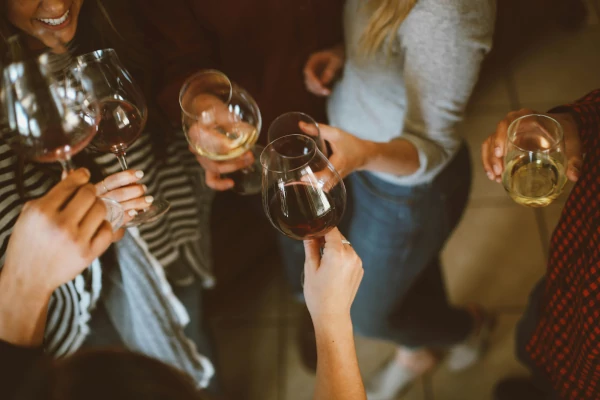Global Liquor Trends: Emerging Movements in the Liquor Industry

Explore the latest trends shaping the liquor industry, including the rise of craft spirits, non-alcoholic alternatives, and innovative flavors. Discover how sustainability and cultural influences are redefining the drinking experience worldwide!
The liquor industry is constantly evolving, influenced by cultural shifts, technological advancements, and changing consumer preferences. As we move further into the 21st century, several exciting trends are shaping the global landscape of alcoholic beverages. Here’s a look at some of the most notable emerging trends in the liquor industry from around the world.
It is advisable to have alcohol/liquor drinking license in Maharashtra. You can apply online for alcohol/liquor drinking liquor license here : Click Here to Apply Now
1. Craft Spirits Movement
The craft spirits movement continues to gain momentum across the globe. Smaller, independent distilleries are popping up everywhere, focusing on quality, authenticity, and unique flavor profiles. These artisans often use locally sourced ingredients and traditional production methods, appealing to consumers who value craftsmanship over mass production. The emphasis on small batches allows for experimentation and creativity, resulting in innovative products that captivate the market.
2. Non-Alcoholic and Low-Alcohol Alternatives
With a growing awareness of health and wellness, there’s been a significant shift toward non-alcoholic and low-alcohol beverages. Brands are now creating sophisticated non-alcoholic spirits and cocktails that offer complex flavors without the buzz. This trend caters to consumers who wish to moderate their alcohol intake without sacrificing social experiences. Expect to see more bars and restaurants expanding their non-alcoholic offerings in the coming years.
3. Sustainability and Eco-Friendly Practices
Sustainability is no longer just a buzzword; it’s becoming a fundamental aspect of the liquor industry. Distilleries are increasingly adopting eco-friendly practices, such as using renewable energy sources, recycling waste products, and sourcing ingredients sustainably. Consumers are becoming more conscious of the environmental impact of their purchases, leading brands to emphasize their commitment to sustainability in their marketing efforts. This trend reflects a broader societal shift towards responsible consumption.
4. Unique Flavor Profiles and Innovations
The demand for unique flavor experiences is driving innovation in the liquor industry. From exotic botanicals in gin to innovative infusions in whiskey, consumers are eager to explore new tastes. Flavor experimentation is also extending to cocktails, with mixologists crafting drinks that incorporate unusual ingredients like herbs, spices, and even savory elements. This trend encourages a sense of adventure among consumers, making the exploration of new flavors an integral part of the drinking experience.
5. Regional and Heritage Spirits
As consumers become more adventurous, there’s a rising interest in regional and heritage spirits. Liquors that reflect local traditions, ingredients, and production methods are gaining popularity. This trend not only supports local economies but also allows consumers to connect with different cultures through their drinking experiences. For instance, mezcal from Mexico, aquavit from Scandinavia, and pisco from Peru are all experiencing a resurgence as consumers seek authentic tastes from around the globe.
6. Digital Engagement and E-Commerce Growth
The pandemic accelerated the shift toward online shopping, and the liquor industry has embraced this change. E-commerce platforms are becoming essential for consumers looking to purchase their favorite spirits, especially as regulations around alcohol sales continue to evolve. Additionally, brands are leveraging social media and digital marketing to engage with consumers in new ways, offering virtual tastings, interactive experiences, and behind-the-scenes content that fosters a deeper connection.
7. The Revival of Classic Cocktails
While innovation is key, there’s also a nostalgic revival of classic cocktails. Bartenders are dusting off vintage recipes and giving them a modern twist. Drinks like the Old Fashioned, Negroni, and Martini are making a comeback, often with unique variations that incorporate contemporary ingredients. This trend not only appeals to older generations but also introduces younger drinkers to the rich history of cocktails.
8. Gender Inclusivity in Marketing
The liquor industry is increasingly recognizing the importance of gender inclusivity in its marketing strategies. Brands are shifting away from traditional stereotypes and targeting a more diverse audience. Campaigns that celebrate inclusivity and diversity resonate well with consumers, reflecting a broader societal push towards equality. This shift not only benefits brands but also fosters a more welcoming atmosphere within bars and tasting rooms.
Conclusion
The global liquor industry is in a state of dynamic transformation, driven by consumer preferences and societal trends. From the craft spirits movement to a focus on sustainability, these emerging trends highlight a future where innovation, responsibility, and inclusivity take center stage. As we continue to navigate this evolving landscape, one thing is clear: the world of liquor is more vibrant and diverse than ever before. Whether you’re a casual drinker or a connoisseur, there’s never been a more exciting time to explore what the world of spirits has to offer. Cheers!
How to get drinking liquor license : Click Here to Apply Now











